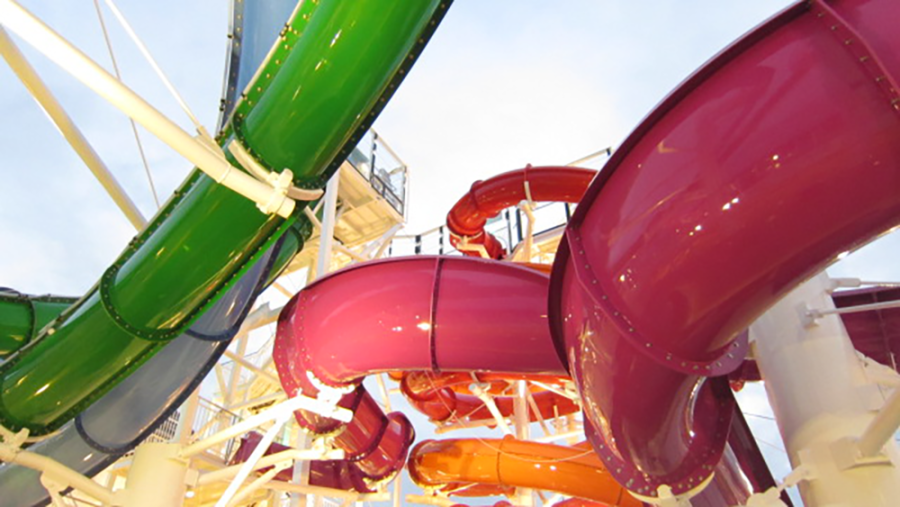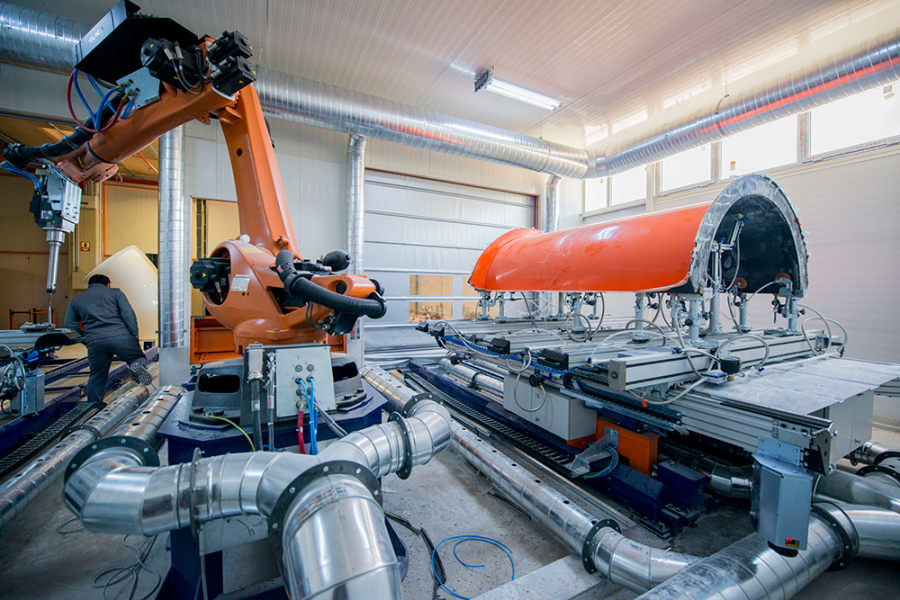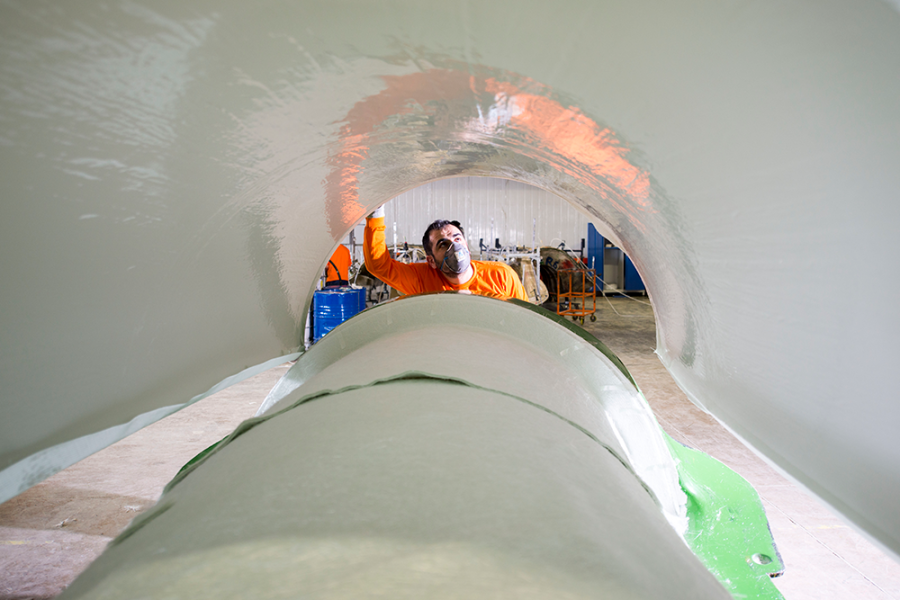Taking Steps to Make Water Slides Greener

Commercial water slides are typically made of fiber reinforced polymers (FRP), which are a mix of colored polymer resin and glass fibers to form and reinforce their structures.
When it comes to making water slides greener at the manufacturing stage, “there are two things to consider: materials and manufacturing,” says Hossein Ashrafizadeh, Ph.D., senior composite engineer for WhiteWater. “For FRPs, we can focus on using more sustainable and eco-friendly material for polymer composite constituents—for example, natural fibers rather than synthetic fibers or recyclable/biodegradable resins for the composite matrix. For manufacturing, we can use greener processes, such as automated resin transfer molding (RTM), which produces less emissions compared to the traditional open mold process.”
According to Baris Pakis, president of Polin Group, RTM production offers important environmental advantages.
“It supports a cleaner environment since RTM’s styrene emissions are much lower,” he says, adding that Polin converted to greener “Light RTM” production methods in 2006. “Plus, physical waste is much less than the conventional methods.”
Improve Environmental Performance
Water slides are part of a larger recreational process that can also be made more sustainable. Take heat loss, where water pumped onto indoor slides for lubrication loses warmth to the air.
“Today, we’re developing in-laminate solutions for insulation that will help parks minimize their heat loss,” says Greg White, ProSlide Technology’s vice president of products. “A lot of our clients operate indoor parks, so we want to reduce heat loss to help them lower their energy bills.”
ProSlide is also looking at the entire water slide ride experience to find ways to make it more sustainable as a whole.
“[This includes] better technologies to detect where riders are on the ride and making sure we’re only using water and power when it’s needed for them,” White explains. “Over the past few years, we’ve been able to achieve a 25% reduction in water flows and power consumption in all of our rides.”
Additionally, ProSlide is exploring better ways to contain water within a ride and minimize leaks. Less water wasted means less water pumped and purified, which saves resources and money spent.

A Broad View
WhiteWater is taking a big picture approach to making water slides more sustainable. According to Ashrafizadeh, this includes working with suppliers that employ more environmentally friendly manufacturing methods and materials and use less packaging, as well as managing and controlling material storage based on shelf life to minimize material waste.
WhiteWater is also examining sustainable manufacturing options by identifying harmful materials such as paints, resins, and sealants that can be substituted with more eco-friendly alternatives; reducing the amount of packaging used to prepare its slides for shipping; and replacing packaging with biodegradable components or even packaging that can be repurposed by clients after slides have been unpacked.
Extending Lifespans
One way to make water slides more sustainable is to make them last longer in service, a practice that benefits the planet and park operators alike. Making this happen requires an ongoing partnership between manufacturers and operators to optimize the regular maintenance and refresh of these systems over time.
“A water slide’s material selection and design should be made in accordance with the environment in which the slide will be used and the loads it will be exposed to,” Pakis says. “Afterward, it is possible to extend the service life with regular maintenance and repair services.”
White adds that there are many ways to extend a slide’s lifespan. “This includes routine washing and waxing to maintain the color and glossiness of the ride, prompt detection and mitigation of leaks, and regular inspections of the structural support system,” he says.

Recycle and Reuse
Even with the best of maintenance, water slides eventually reach their end of life. So, what can water park operators do when their slides have to be taken out of service?
According to Ashrafizadeh, there are plenty of reuse options available to operators. “They can be evaluated to see if repurposing or upcycling is possible for low-profile applications—for example, dog training facilities, paintball arenas, or concrete filling,” he says.
To broaden the range of reuse options for water slides, WhiteWater is researching the potential for replacement of petroleum-based polymers with bio-based polymers that have improved recyclability.
Finally, when water slides cannot be reused, the choice of disposal method matters. “The most common one is putting slides into landfill sites after a grinding and/or burning process,” Pakis says. “Other methods—such as burning ground wastes in cement kilns to produce energy or adding ground waste to new asphalt, cement, or composite materials—provide some degree of reuse.”
